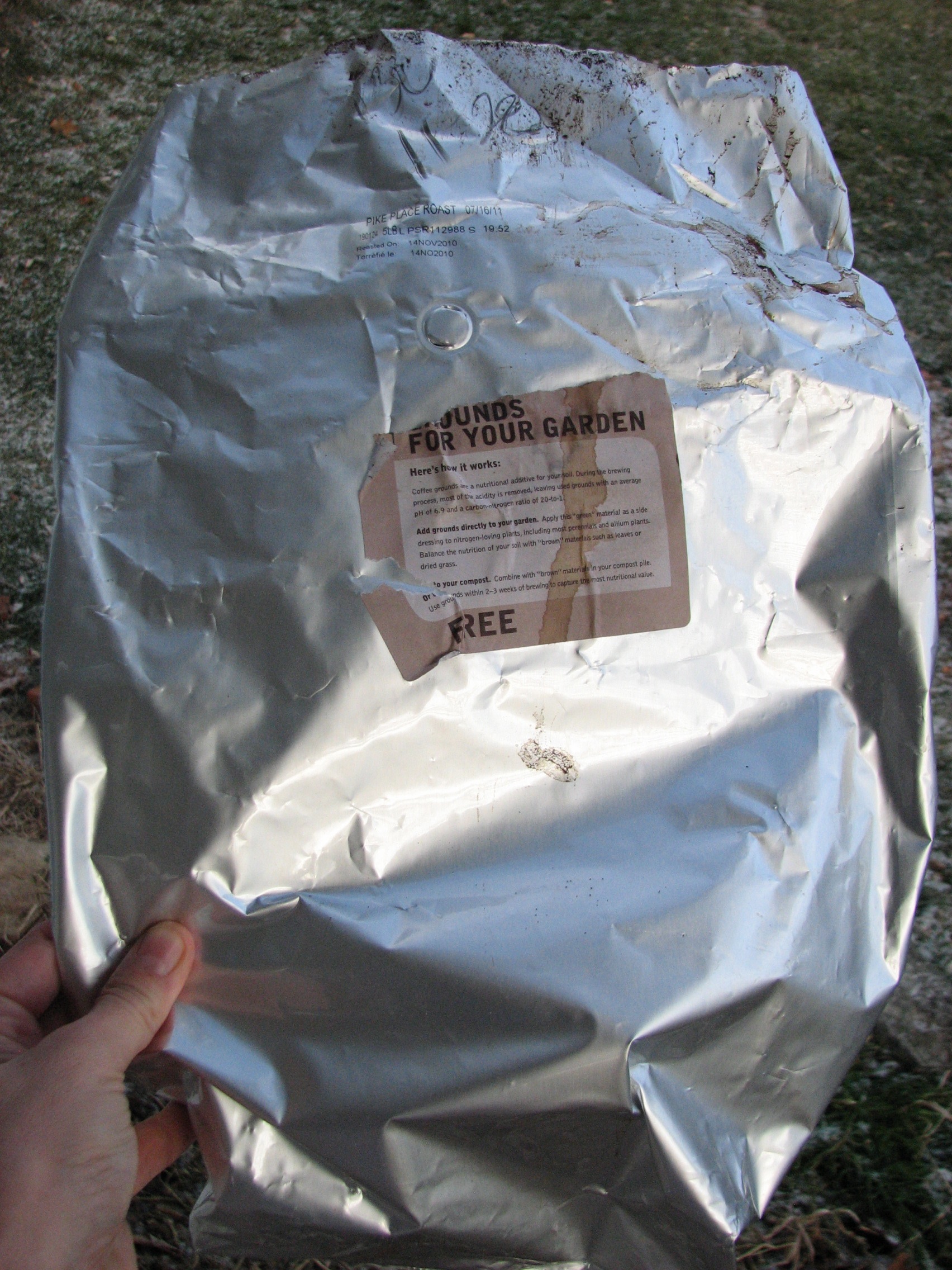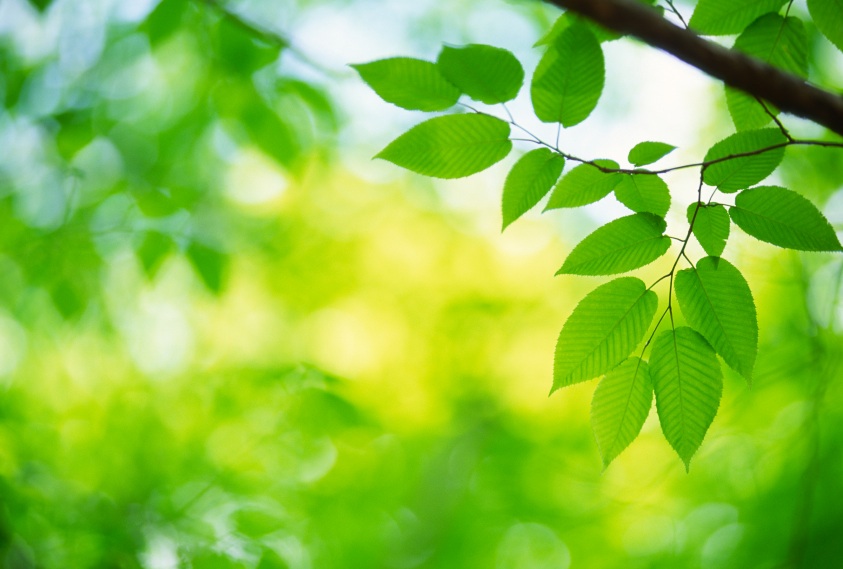 For the past 15 years, Starbucks has been distributing its used coffee grounds free of charge through its stores. The stated goal of the Grounds for Your Garden program is to keep this rich organic material out of the landfill by enlisting its customers as foot soldiers in the war against waste. But what is the net impact of this offering really?
For the past 15 years, Starbucks has been distributing its used coffee grounds free of charge through its stores. The stated goal of the Grounds for Your Garden program is to keep this rich organic material out of the landfill by enlisting its customers as foot soldiers in the war against waste. But what is the net impact of this offering really?
Have you ever looked at one of the bags used to distribute the grounds? You could make a space suit out of that stuff! The bags are made from thick, heavy plastic, and I mean heavy. Sure, Starbucks wants to protect its good Samaritans from leaks and stains from the wet, heavy grounds, but surely kitchen trash bag strength would be sufficient.
Is this really a positive environmental initiative? How long would it take for the 5-lbs. of coffee grounds contained in the bags to decompose? How long would it take for the thick, silver plastic bag holding those grounds to decompose? 1,000 years?
Distributing wet, highly compostable coffee grounds in thick plastic, noncompostable bags seems so overtly ridiculous, if not outright irresponsible, that I couldn’t help but think I was missing something. Maybe these bags were made from recycled rubber. Tires maybe. Maybe the bags were part of NASA’s space suit recycling program.
I decided to contact Starbucks to find out. Here was the response I received from its corporate social responsibility department:
At a typical Starbucks store, coffee grounds make up more than a third of the waste stream by weight. That’s why we introduced this program in North America in 1995. We offer complimentary five-pound (2.27-kilogram) bags of used coffee grounds to customers to use as a nutrient additive to their soil. The program has spread to a variety of locations including Chile, Greece, Australia, Hong Kong, Canada, the United Kingdom, and Korea.
On a personal note, the customer service representative added:
It may be down to the local managers, but at the Starbucks I frequent, we bring the plastic bags back to the store for reuse.
I picked up my Grounds for Your Garden bag at a travel plaza on the Ohio Turnpike, so I doubt they get a lot of returns for recycling. So what I took from this is that Starbucks does not have a recycling policy for these bags; nor does it use recycled materials to create them. I would hate to conclude that Starbucks’ “green” program is nothing but greenwashing or worse since, unless I’m still missing something, the net impact on the environment is likely to be negative. I mean, a corporation claiming to be doing something good for the environment wouldn’t really do that . . . right?
Here are three thoughts I have for Starbucks:
1. Use recycled material to make the bags. This way, even though they end up in a landfill eventually, at least they got reused first.
2. Use plastic grocery store bags to distribute the grounds. You might have to distribute the grounds in smaller volumes by weight to prevent breakage, but even so, Starbucks customers can take them back to the grocery store to be recycled after they dump the grounds.
3. Let people bring in their own bags and containers.
It’s not rocket science . . . . although the current Grounds for Your Garden bags might be.
Since writing this post, I have been told by several IE readers that the bags used to hold the grounds are the same bags in which the original coffee beans come. So the bags are simply being re-used on-site at the Starbucks locations. I was unable to find this information before writing the post. I tried, but I could find nothing. Even Starbucks corporate was unable to tell me the source of the bags.
As bloggers, it’s our job to ask questions. We do our due diligence, but being wrong sometimes is a hazard of the job. If you’re never willing to go out on a limb, you never really learn anything.
Even if the bags are re-filled with grounds on site, this still leaves a lot of questions. It’s great that the bags get re-used, but then they end up in the consumer stream where they will inevitably be landfilled and live forever or close to it. If Starbucks is really concerned about the environment, why aren’t they recycling these bags into more whole bean coffee bags? This would keep the bags out of the waste stream entirely. It would also reduce the need to manufacture new bags in the first place. Or could they be recycled into something else like they do with juice pouches that get turned into shopping bags? This would, of course, require Starbucks to find homes for the grounds on a store-by-store basis. Perhaps they don’t want to add this to the job responsibility of the local store managers. But why not? Or maybe they could let customers bring in their own containers for coffee grounds. “Bring your tub . . . we’ll fill it up!”
My point in this and other posts is that just because it looks environmentally responsible doesn’t necessarily mean that it is. Lots of things look good on the surface, but when you dig deeper, they’re more complicated. Those are the kinds of questions we need to be asking, and we have to be willing to ask them publicly, even if we risk being wrong.
— Heidi Tolliver-Nigro 2/7/2011










Wow, you sound pretty bitter. If you used this program, you could return the bag over and over and over and get free grounds…
The bags used for the grounds are reused. They are the bags that coffee xomes in when delivered to the Starbucks store, and they are then used for the garden grounds.
In Canada the bags are a metal foil that is fully recyclable. The bags are the same ones that whole bean coffee is delivered to the store in. So that bag is being reused when it leaves the store filled with grounds. Unfortunately there are few options for the design of the bag itself, due to the need to comply with foodsafe regulations.
To support Colin, I am a Starbucks employee in the US and the bags we use for this program are the same ones in which the whole bean coffee arrives. These bags must be thrown out regardless, so by packaging used coffee grounds for customers in them, we are actually not increasing the amount of waste we are producing but increasing the use of bags which will inevitably end up in a landfill anyway. As a student of environment analysis and policy, I am vehemently opposed to corporate greenwashing, but this is one case which is nothing but a genuine effort to reuse some of the byproducts Starbucks produces.
While reading this post by Heidi, I couldn’t help but laugh. Her calling the bags NASA space suits is quite obnoxious. I don’t work for Starbucks, but I knew that the bags they put the used coffee grounds in are the bags which the coffee beans arrive in to begin with. Heidi here on the other hand thinks Starbucks would go out of their way to produce a bag exclusively for their used coffee grounds to make distrubution easier. Hahahah…Heidi, instead of writing an article like this, go plant tree!
Thanks, Anthony. You know more about it, apparently, than Starbucks corporate was able to tell me. I couldn’t contact the store because I couldn’t find it. I contacted Starbucks corporate communications and they didn’t know. I did a number of Google searches, trying to find information — any information — other than the corporate line and could not. I wrote based on the only information I could find. Believe it or not, I’m glad to be wrong. If my error gives Starbucks some good press, all the better.
I understand you need to go out on a limb question corporate greenwashing and that is commendable. However, I think you probably should have conducted better due diligence before you wrote this article. Calling Starbucks corporate wasn’t a great way to vet this piece. Whenever your looking for operational details of a program it is best to ask the employees on the ground.
Heidi, this is tripe.
Please don’t publish if you don’t think, first and foremost.
You haven’t even scratched the surface of a triple bottom line study, which would have to be objectively carried out in order to properly investigate and assess this particular program Starbucks has chosen to implement.
Most of the points you raise are not just easily refutable, but down-right insulting to read. As a proclaimed economist, surely you must realize that the social, economic and environmental values must be properly considered before tarring this initiative with such definitive and well-thought brushes, i.e.;
“the net impact on the environment is likely to be negative”
I am offering you a suggestion. Perhaps consider the fundamental principles which govern the proper sustainable assessment of such a program. Maybe look at the ‘Waste Hierarchy’ and possible (+ve/-ve) implications associated, the documented and established social benefits of recycling, the potential for economic gain on Starbucks’ behalf due to decreased waste processing costs, public health and safety considerations due to packaging and containment of the waste…
The list goes on. And on. And on. Please next time at least establish a solid basis, null hypothesis, or anything remotely defensible before again launching on this ‘space aged NASA’ rant.
Or perhaps write about something you actually know something about?